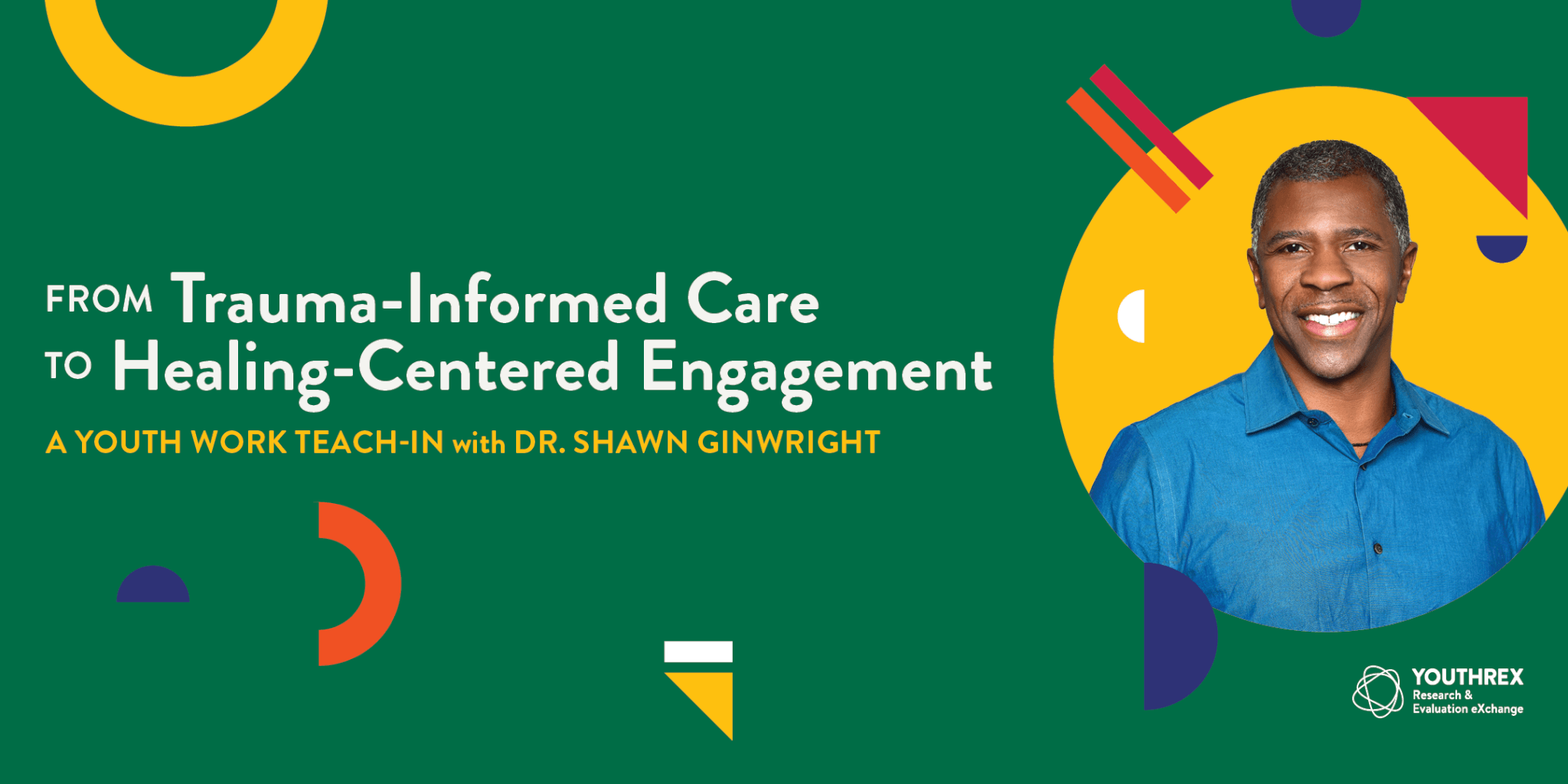The Individual, Personal and Institutional: How to Promote Healing-Centered Engagement
On February 11, 2021, YouthREX hosted our first ever virtual teach-in, From Trauma-Informed Care to Healing-Centered Engagement: A Youth Work Teach-In with Dr. Shawn Ginwright. The event was energizing, engaging, and our most attended virtual event yet! YouthREX Research Assistants Jae Woong Han and Olive Arinze offer their reflections and takeaways on the event in this mini-series. Stay tuned for our next virtual teach-in! 🙂
Healing-centered engagement is three things:
- A perspective for how we see young people and the things that cause them harm;
- An approach for how we as youth workers can support them; and
- A strategy we can use in our youth serving organizations to not only provide therapy but address harm and restore wellbeing.
For a healing-centered approach to be complete, it must also be asset-driven, and focus on positive things to promote, and finally must support youth workers- both adults and youth themselves with their own healing.
To help illustrate what can cause trauma, Dr. Ginwright gave the following analogy: imagine being in a room with physical toxins and lead paint. These toxins are dangerous to anyone exposed to them for a long period time without getting treatment. Similarly, social toxins like fear, anxiety, stress, are a result of trauma like othering, homophobia, and both root causes are present in our environment so if left untreated are harmful to all exposed to it.
For me, this talk brought about a huge shift in my understanding of trauma- it can be systemic, rather than purely episodic. What most of us understand as trauma is what Dr. Ginwright referred to as the episodic, downstream, medical events model basically, specific events that happen sporadically in life. Then often the diagnosis for this lifelong period of trauma is Post Traumatic Stress Disorder (PTSD), which we tend to associate exclusively with soldiers returning from war.
Actually, he explained, trauma is often inflicted on us constantly from the environment we live in. It’s a function of inequities in our institutions- our schools, our non-profits, our businesses, even our families. From this understanding, this kind of trauma can be better diagnosed as Persistent Traumatic Stress Environment (PTSE). Therefore, the conventional method of treating the youth’s symptoms and leaving them to go back into the traumatic environment is not very effective. This shift in understanding has made me reflect more on my own circumstances and do my best to reduce trauma in my own environments, starting with my communications: be more upbuilding and more sensitive to what triggers folks.
My new strategy as a communicator ties in well with how healing-centered engagement actually happens – at the individual, interpersonal, and institutional level. At the individual level, healing-centered engagement happens when we not only talk about the trauma of young people, and ourselves as youth workers, but understand that we all are so much more than our trauma. So, making space for young people to talk about the good things happening in their lives, their hopes, dreams and aspirations is crucial. For us as youth workers, to show up better for young people, we have to do the same- make space for both our trauma and positive things in our lives, but also take very good care of ourselves. We must recognize that we need healing too, and do more things as simple as take naps, read books for pleasure not just for work, take walks, etc.
At the interpersonal level, we need to work at healing relationships that are traumatic and create spaces where we can not only be vulnerable with each other, but also restore wellbeing by creating communities where healing-centered engagement is practiced. For example, in these communities, not define yourself only on a surface level (e.g. I’m a social worker, I’m a professor) but go deeper – I’m a person who’s figuring stuff out, who’s scared. This way, we have more meaningful conversations and work towards healing. At the institutional level, we must implement policies and values that promote wellbeing. For example, if there’s a policy where days off are very limited, or non-existent, that policy should be changed because it’s causing harm by not allowing folks to properly rest and rejuvenate themselves.
In summary, while our environments are traumatic, we as individuals, youth, and youth workers can create better environments or reduce the harm caused by systems. By promoting healing-centered engagement strategies in the communities we exist in, in our work with youth, and in our personal lives, we can eliminate social toxins and improve our wellbeing.


